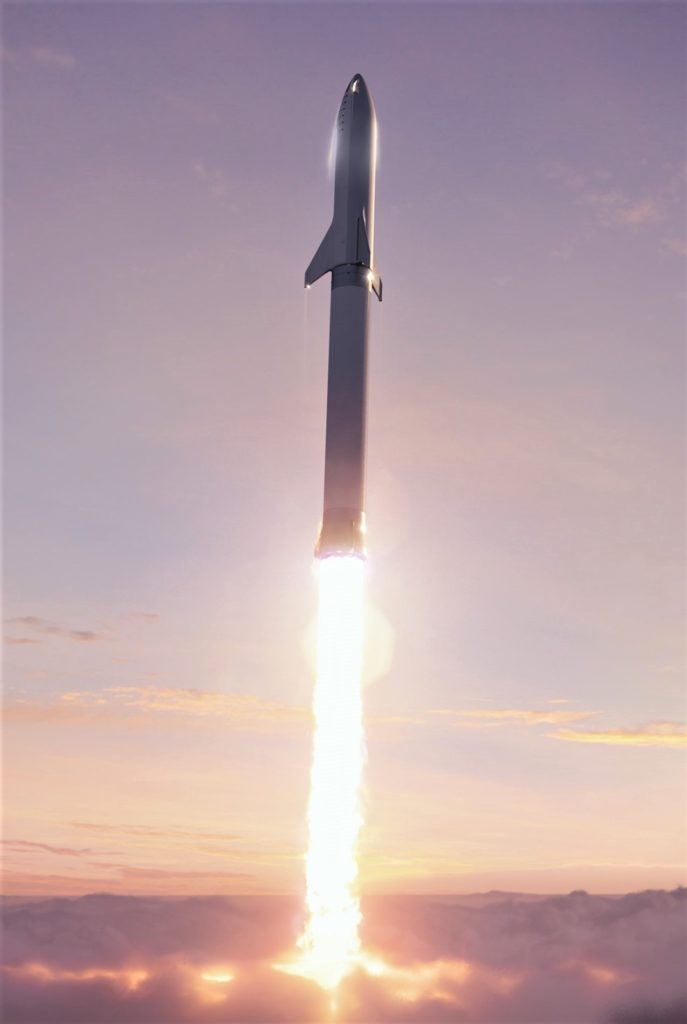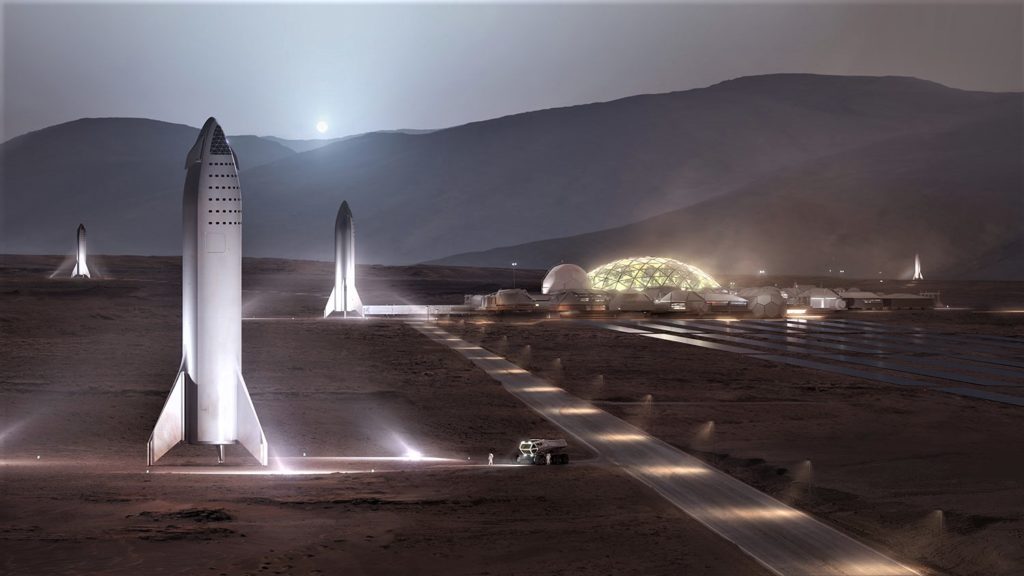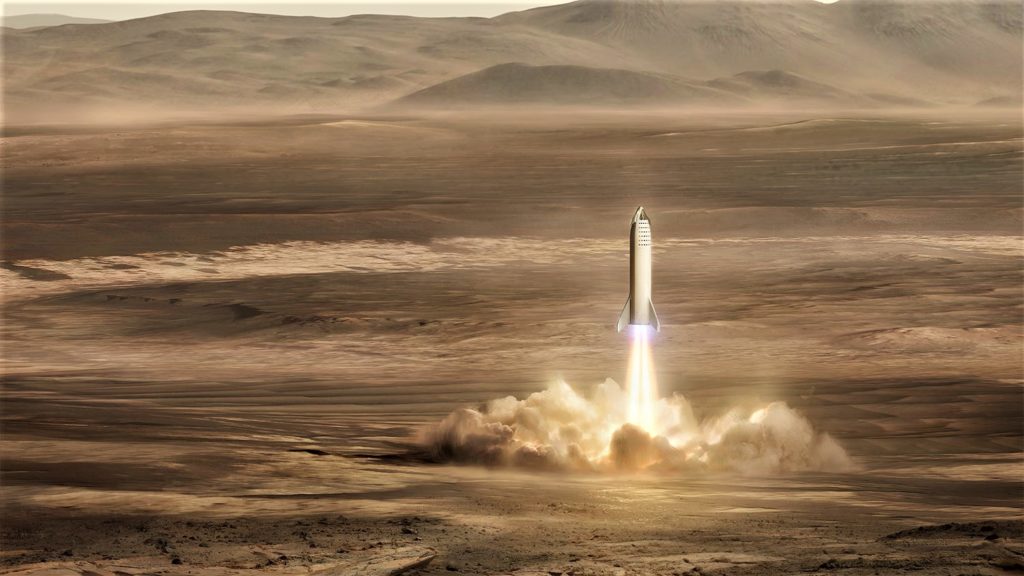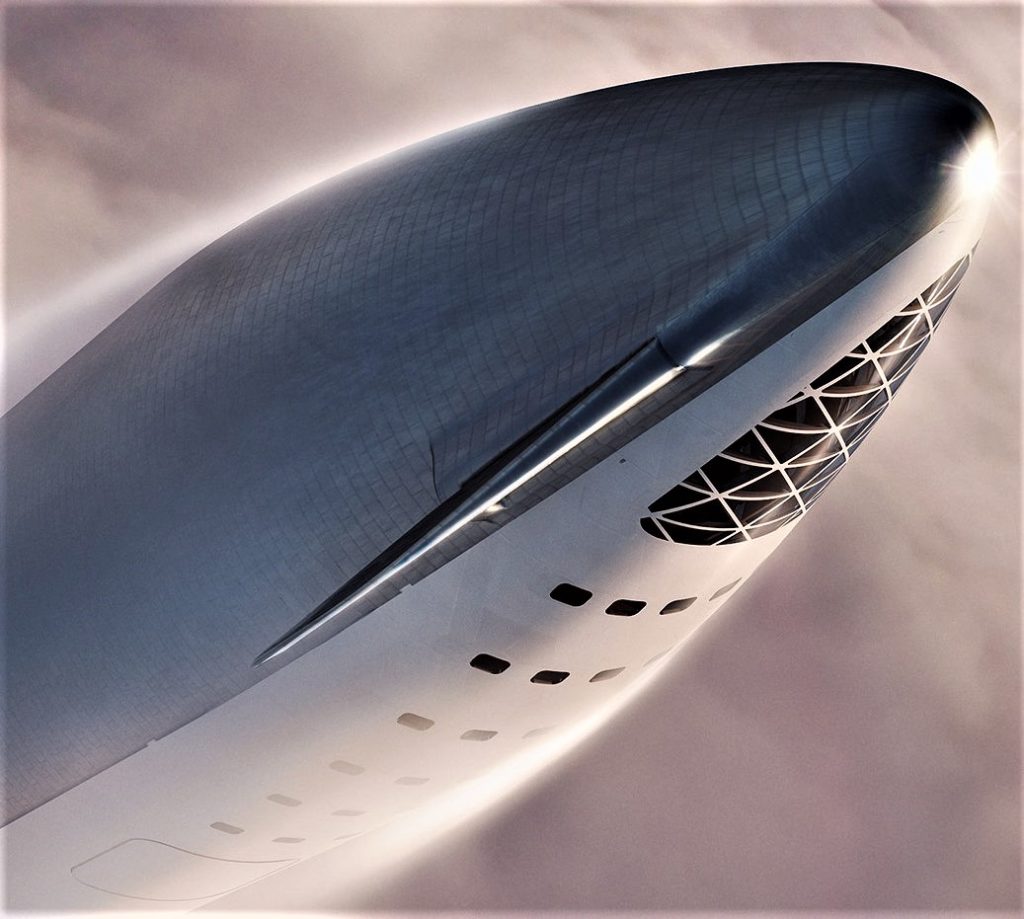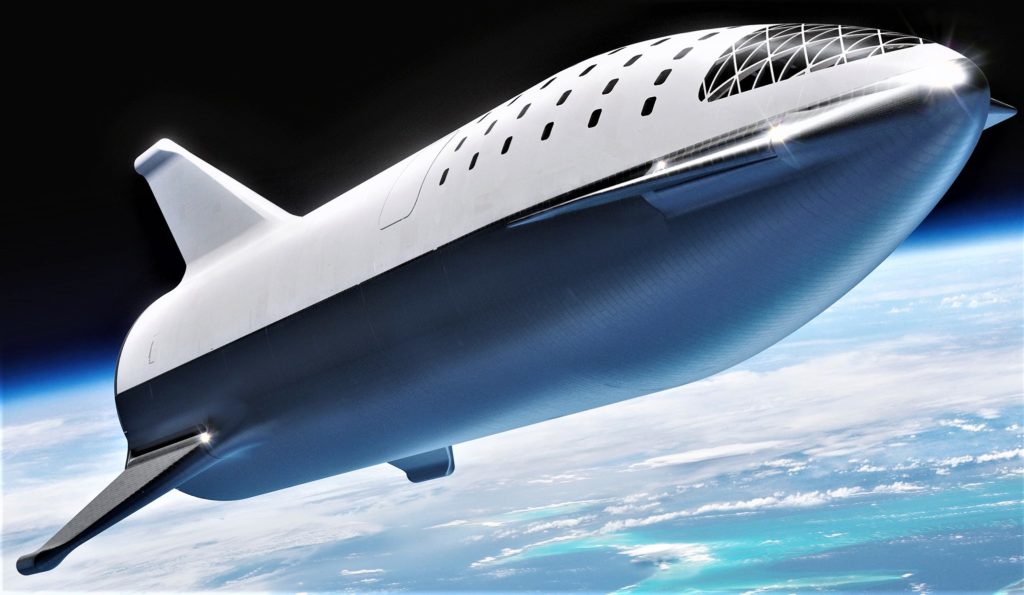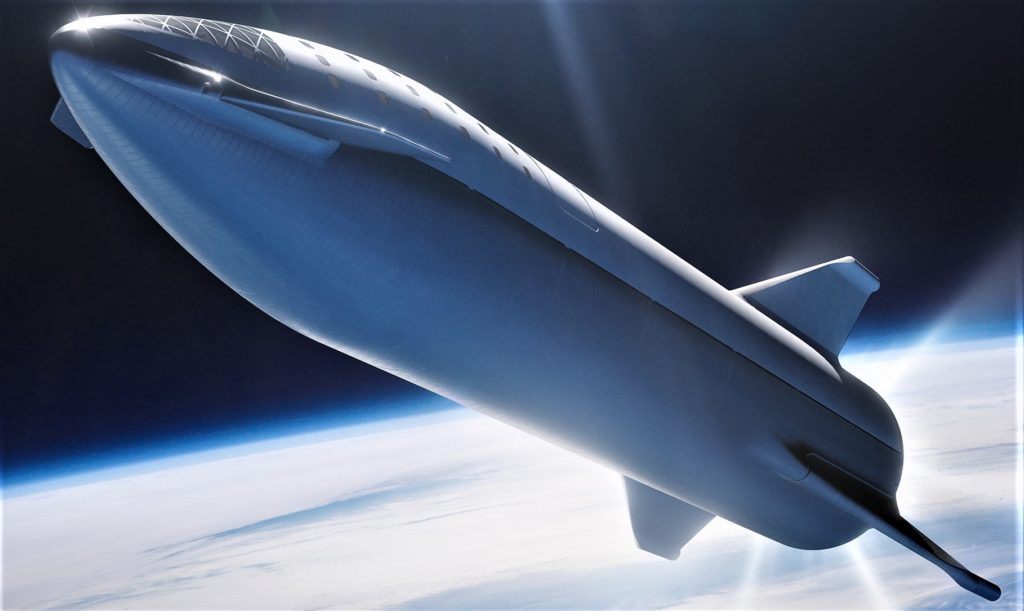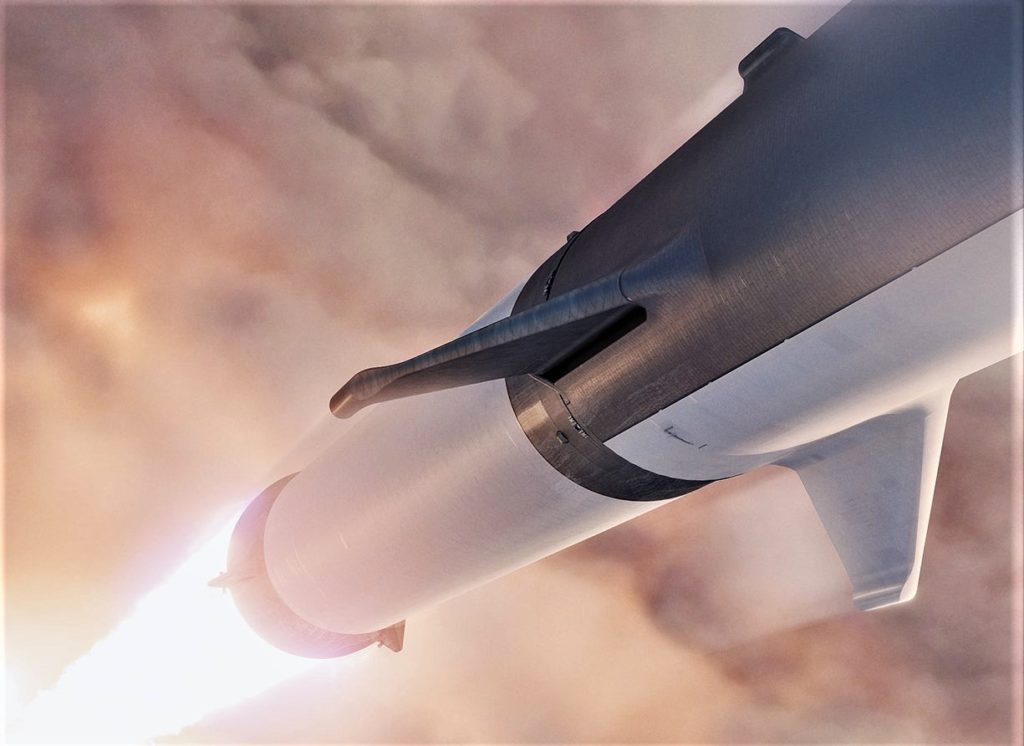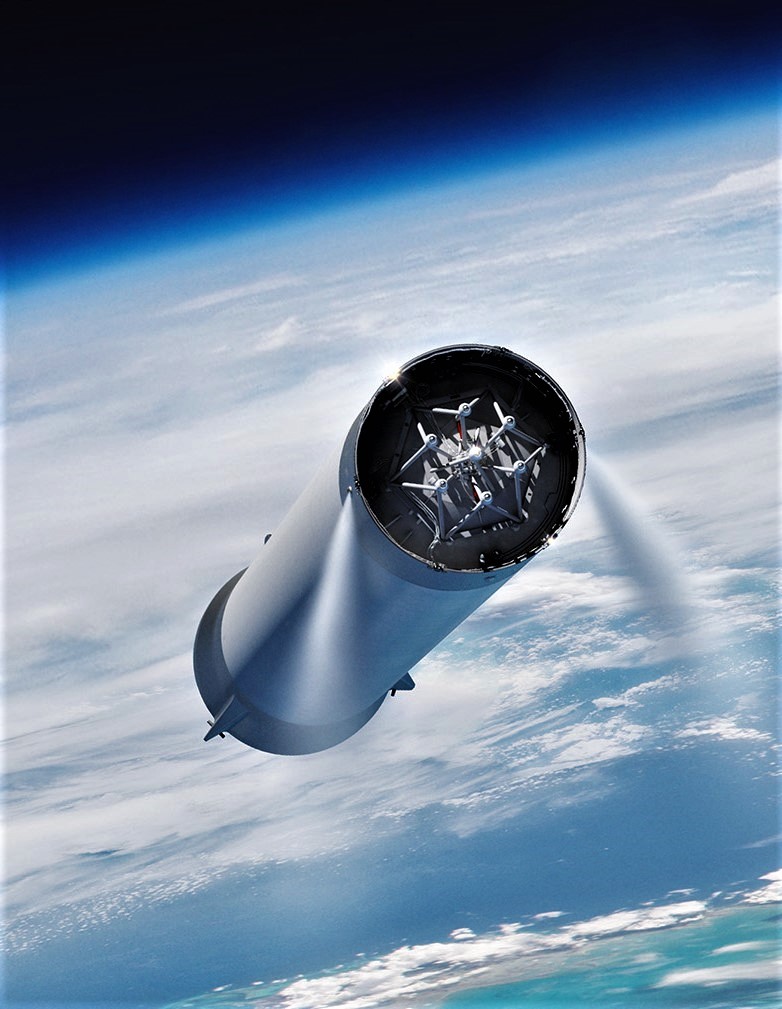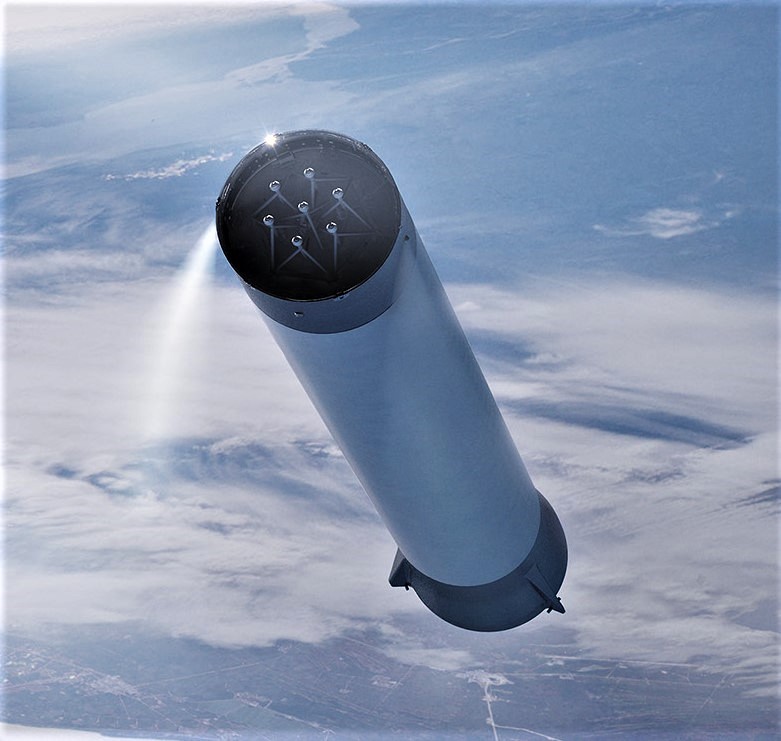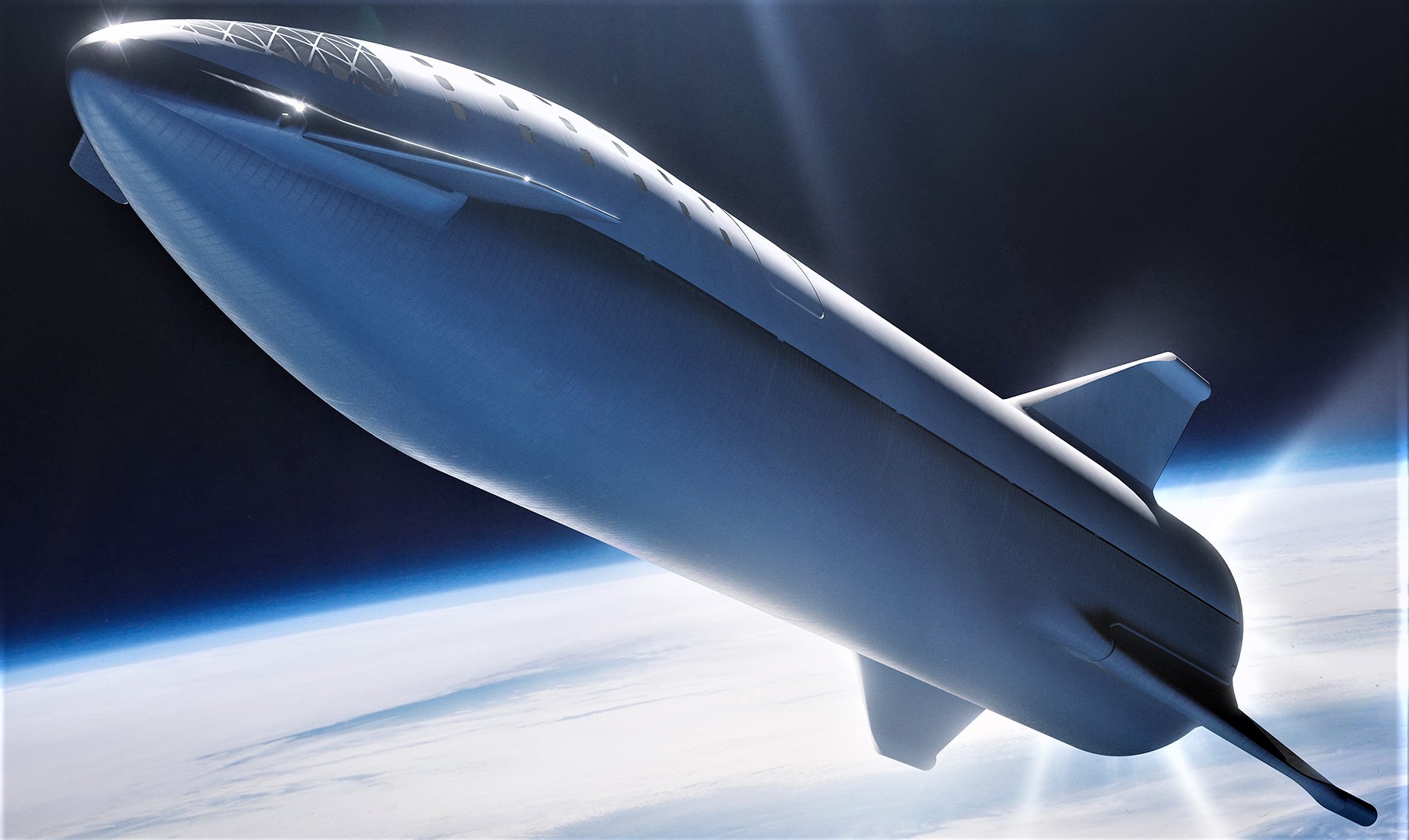
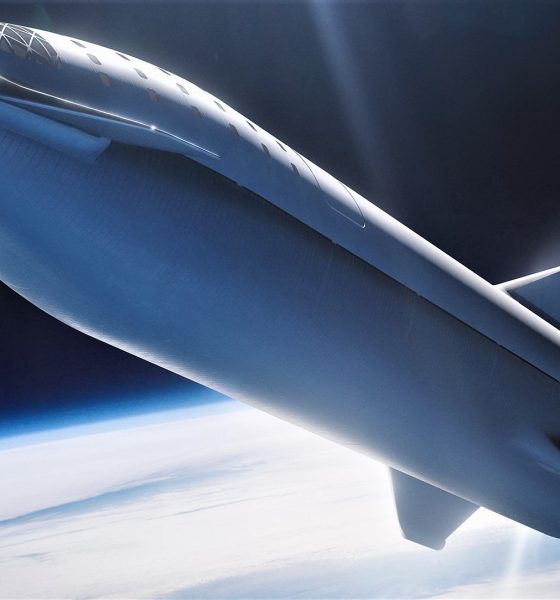
News
SpaceX’s BFR rocket and spaceship look more real than ever in new 4K renders
Following a September 17th presentation from CEO Elon Musk, SpaceX has published a series of uniquely detailed renders of BFR, showing off a number of new features present on the updated booster and spaceship, ranging from heat-shield tiles to Raptor pusher-rods.
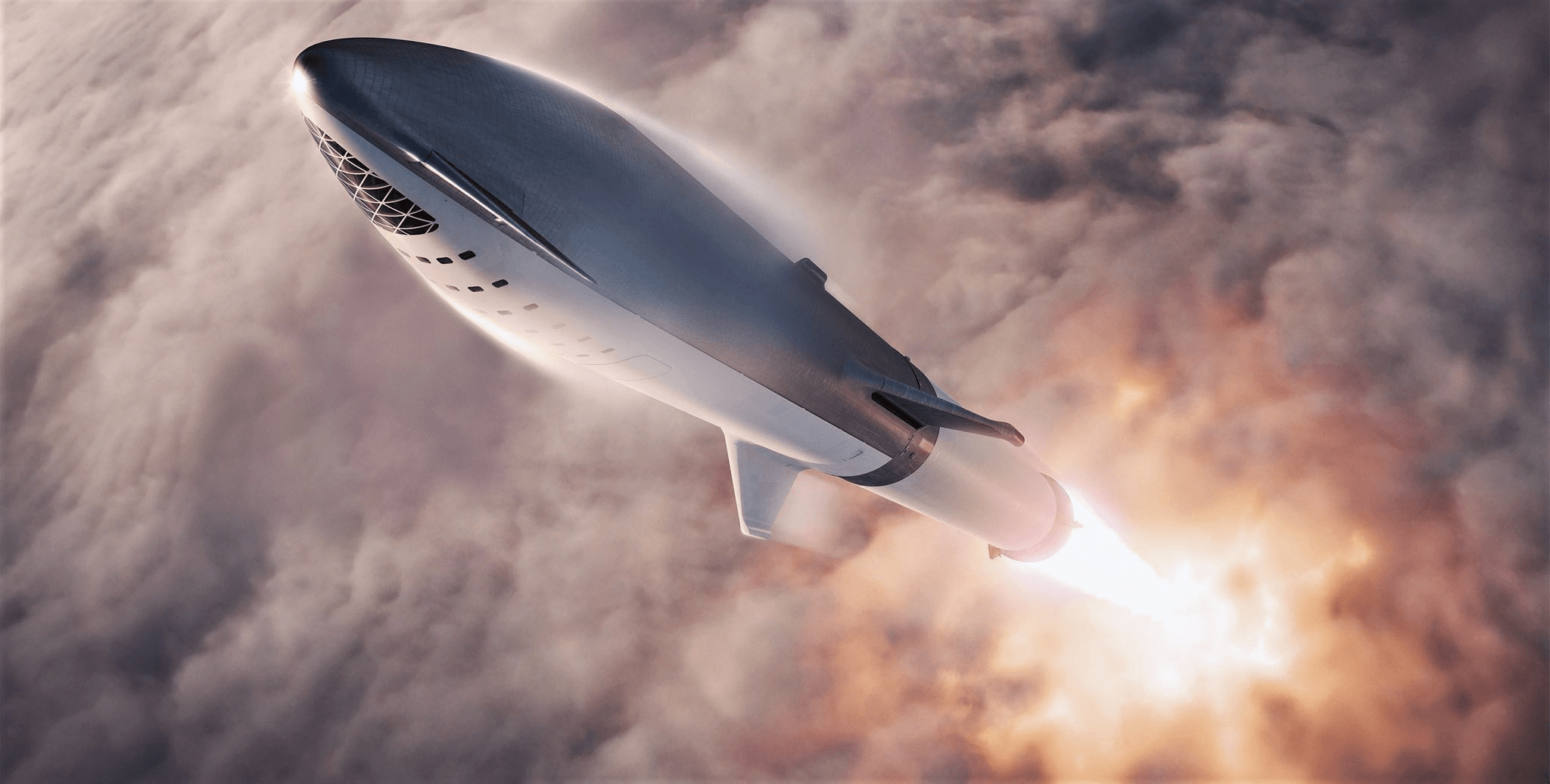
To be clear, it’s possible that a skilled 3D designer took extreme artistic license and added miscellaneous trinkets and details that generally appear to look like true rocket components, but it seems unlikely that SpaceX (or Musk) would be okay with publicizing renders of a launch vehicle that go beyond the fidelity of what is already in work at an engineering level.
As such, the exceptionally detailed renders – published in 4K with a style nearly identical to Crew Dragon CGI posted recently – may directly rely on engineering-grade CAD (computer-aided design) drawings from SpaceX’s in-house BFR development team. Chances are good that that is the case to some extent, thanks largely to the fact that SpaceX has already begun fabricating full-scale structures for the first spaceship prototype. Building huge aerospace-grade subcomponents before the overall systems design has been completed is inadvisable depending on tolerances for waste, as the most likely outcome is having to build a new component when designs invariably change before any complex system’s various components work together on paper.
- BFR (2018) breaks through a cloud layer shortly after launch. (SpaceX)
- A number of BFR (2018) spaceships seen landed at a future Mars base. (SpaceX)
- An updated spaceship lands on Mars. (SpaceX)
At a minimum, the sheer level of detail included in these updated BFR renders points to a design that is more mature and closer to reality than anything SpaceX has shown before in its series of prospective Mars rockets presented over the last two years.
Highlights from SpaceX’s BFR (2018) renders include beautiful details of heat shield tiles, visible separation mechanisms between the spaceship and booster, an extremely detailed BFR booster interstage (featuring seven pusher rods for the upper stage’s seven Raptor engines, just like Falcon 9), and even spot-on plumes from the rocket’s thrusters.
- A closeup of BFS’ nose section, featuring impressively varied tile-sizes, joining methods, and extremely precise curves on the interface between canard wings and the hull. (SpaceX)
- A slightly broader overview of BFS just after separating from the booster. Note notches along the shield/skin divide, as well as very specific access panels, hatches, and smaller protuberances. (SpaceX)
- A view of BFS just after separating from its booster stage. (SpaceX)
The latter detail is particularly interesting because the thruster pods shown firing definitively take the place of where grid fins are later shown in certain slides – the most obvious conclusion is that a lower-fidelity model of BFR was used for the presentation’s animations, whereas the 3D model used for renders was far closer to the real deal. Musk did comment on Twitter that the lack of grid fins was a simple mistake on the part of the graphic designer, but it’s hard to parse that story (reasonable as it is) and the artists’ very specific decisions to place and illustrate RCS pods in action.
Good catch. They are there in the flight design, but we forgot to put them in this render.
— Elon Musk (@elonmusk) September 17, 2018
Perhaps SpaceX is entertaining the idea of entirely replacing grid fins with RCS (reaction control system) thrusters on the BFR booster, instead relying on its stubby aft fins for aerodynamic stability and using thrusters for course correction. One way or another, it’s extremely difficult to tell – while it’s probably best to side with Musk’s official comment, the possibility still remains that the replacement of grid fins with RCS thrusters was no accident.
- A detailed view of BFR’s booster interstage, apparent lack of grid fins, RCS pod nubs, and more. (SpaceX)
- BFR’s booster, now known as Super Heavy. (SpaceX)
- Another view of the booster’s distinctly intentional RCS thrusters in place of grid fins. (SpaceX)
- A Falcon 9 Block 5 booster bares its interstage and pusher rod, offering a perfect illustration of its scale. (Bloomberg)
For prompt updates, on-the-ground perspectives, and unique glimpses of SpaceX’s rocket recovery fleet check out our brand new LaunchPad and LandingZone newsletters!

Elon Musk
Elon Musk just said some crazy stuff about the Tesla Roadster
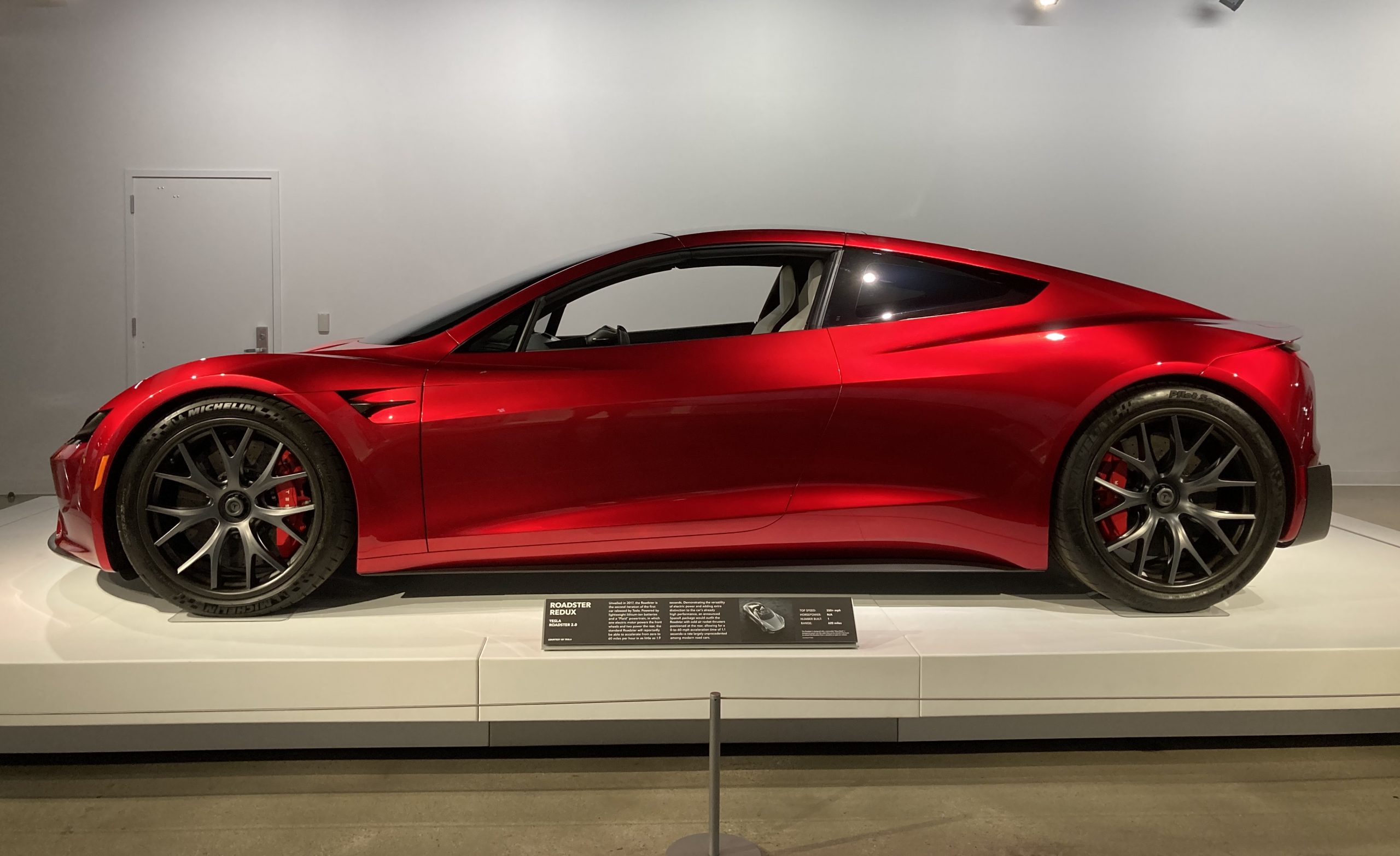
Elon Musk appeared on the Moonshots podcast with Peter Diamandis today to discuss AGI, U.S. vs. China, Tesla, and some other interesting topics, but there was some discussion about the upcoming unveiling of the Roadster, the company’s electric supercar that will arrive several years after it was initially slated for release.
Musk made some pretty amazing claims about the Roadster; we already know it is supposed to be lightning-fast and could even hover, if Tesla gets everything to happen the way it wants to. However, the car has some pretty crazy capabilities, some of which have not even been revealed.
On the podcast, Musk said:
“This is not a…safety is not the main goal. If you buy a Ferrari, safety is not the number one goal. I say, if safety is your number one goal, do not buy the Roadster…We’ll aspire not to kill anyone in this car. It’ll be the best of the last of the human-driven cars. The best of the last.”
🚨 Elon on the Roadster unveiling, scheduled for April 1:
— TESLARATI (@Teslarati) January 6, 2026
Musk makes a good point: people who buy expensive sports cars with ridiculous top speeds and acceleration rates do not buy them to be safe. They hope they are safe in case of an emergency or crash, but safety is not at the forefront of their thoughts, because nobody buys a car thinking they’ll crash it.
The Roadster is truly going to push the limits and capabilities of passenger vehicles; there’s no doubt about that. Tesla plans to show off the new version car for the first time on April 1, and Musk has only hinted at what is possible with it.
Musk said back in November:
“Whether it’s good or bad, it will be unforgettable. My friend Peter Thiel once reflected that the future was supposed to have flying cars, but we don’t have flying cars. I think if Peter wants a flying car, he should be able to buy one…I think it has a shot at being the most memorable product unveiling ever. [It will be unveiled] hopefully before the end of the year. You know, we need to make sure that it works. This is some crazy technology in this car. Let’s just put it this way: if you took all the James Bond cars and combined them, it’s crazier than that.”
Production is set to begin between 12 and 18 months after the unveiling, which would put the car out sometime in 2027. Hopefully, Tesla is able to stay on track with the scheduling of the Roadster; many people have been waiting a long time for it.
News
Tesla launches hiring for Robotaxi program in its twentieth country
Overall, the hiring signals Tesla’s aggressive timeline for global dominance in autonomous mobility.

Tesla has launched a hiring initiative for its Robotaxi program in its twentieth country, as the company posted two new jobs in Thailand this week.
Tesla is hiring in Bangkok and Kowloon for the Vehicle Operator position, which is related to data collection, and is the first in Thailand, but the twentieth country overall, as the company tries to expand into other markets.
🚨 BREAKING: Tesla is hiring additional full-time Vehicle Operators in Bangkok, Thailand.
Previous openings were 6-month, part-time roles. These are equivalent to AI Safety Operator roles in the U.S. pic.twitter.com/R6LzoU1bos— Tesla Yoda (@teslayoda) January 5, 2026
Tesla has had active job postings for Vehicle Operator positions in the United States, India, Israel, Taiwan, Germany, the Czech Republic, Hungary, the UK, Finland, Switzerland, Sweden, the Netherlands, Austria, Spain, Norway, Italy, and Turkey in past listings.
These postings are not all currently available, likely because the roles have been filled.
Thailand is the most recent, and broadens the company’s potential path to expanding its ride-hailing program, which is only active in the United States in Austin, Texas, and the California Bay Area, so far.
These roles typically involve data collection, which assists in improving Autopilot and Full Self-Driving operation. Tesla’s self-driving programs utilize real-world data that is accumulated and stored, observing vehicle and traffic behavior, as well as tendencies that are performed by human drivers to help increase safety and overall performance.
Overall, the hiring signals Tesla’s aggressive timeline for global dominance in autonomous mobility. Although the company has several high-profile rivals and competitors in the field, it has established itself as a main player and a leader in the development of autonomous technology, especially in the U.S., as its FSD suite is refined on almost a weekly basis.
The Full Self-Driving suite is available in seven countries and territories currently, including the U.S., Canada, China, Mexico, Puerto Rico, Australia, and New Zealand. Its biggest goal for expansion is currently the European market, where regulatory hurdles have been the main bottleneck prolonging its launch on the continent.
Tesla has performed months of testing in various European countries, including France and Spain, and does have support in some areas from various regulatory agencies. However, the company is hoping to get through this red tape and offer its suite in Europe for the first time, hopefully this year.
News
Tesla China rolls out Model Y upgrades, launches low-interest financing
These strategies are aimed at improving the ownership experience and keeping vehicle pricing competitive in the world’s largest electric vehicle market.

Tesla has rolled out minor updates to the five-seat Model Y in China, upgrading the vehicle’s center display to a higher-resolution 16-inch 2K screen. The electric vehicle maker also introduced attractive financing options, including 7-year low-interest rates, to offset the new purchase tax on EVs.
These strategies are aimed at improving the ownership experience and keeping vehicle pricing competitive in the world’s largest electric vehicle market.
Five-seat Model Y gets larger, better display
With its recent update, all three variants of the five-seat Model Y now feature an upgraded 16-inch 2K resolution center display, which replaces the vehicle’s previous 15.4-inch 1080p panel. This screen was already used in the six-seat Model Y L, and it offered improved visual clarity. Tesla China has also updated the Model Y’s headliner to black, giving the vehicle a sleeker appearance.
Prices of the five-seat Model Y remain unchanged at RMB 263,500, RMB 288,500, and RMB 313,500 for the respective trims. This update enhances the cabin experience as domestic rivals are already adopting high-resolution screens. As noted in a CNEV Post report, some domestic automakers have begun rolling out vehicles equipped with 3K-resolution displays.
New financing offers
Tesla also launched ultra-long-term financing offers for its locally produced models in China, which include the Model 3 sedan, the five-seat Model Y, and the six-seat Model Y L, through January 31, 2026. The 7-year option features an annualized fee rate as low as 0.5%, which is equivalent to 0.98% interest. This is expected to save customers up to RMB 33,479 ($4,790) compared to standard rates.
A 5-year zero-interest plan is also available, and it has been extended to the Tesla Model Y L for the first time. These incentives help offset China’s new 5% purchase tax on New Energy Vehicles (NEVs) in 2026-2027. Some of Tesla’s rivals in China have announced in recent months that they would be covering the purchase tax owed by buyers early this year.
